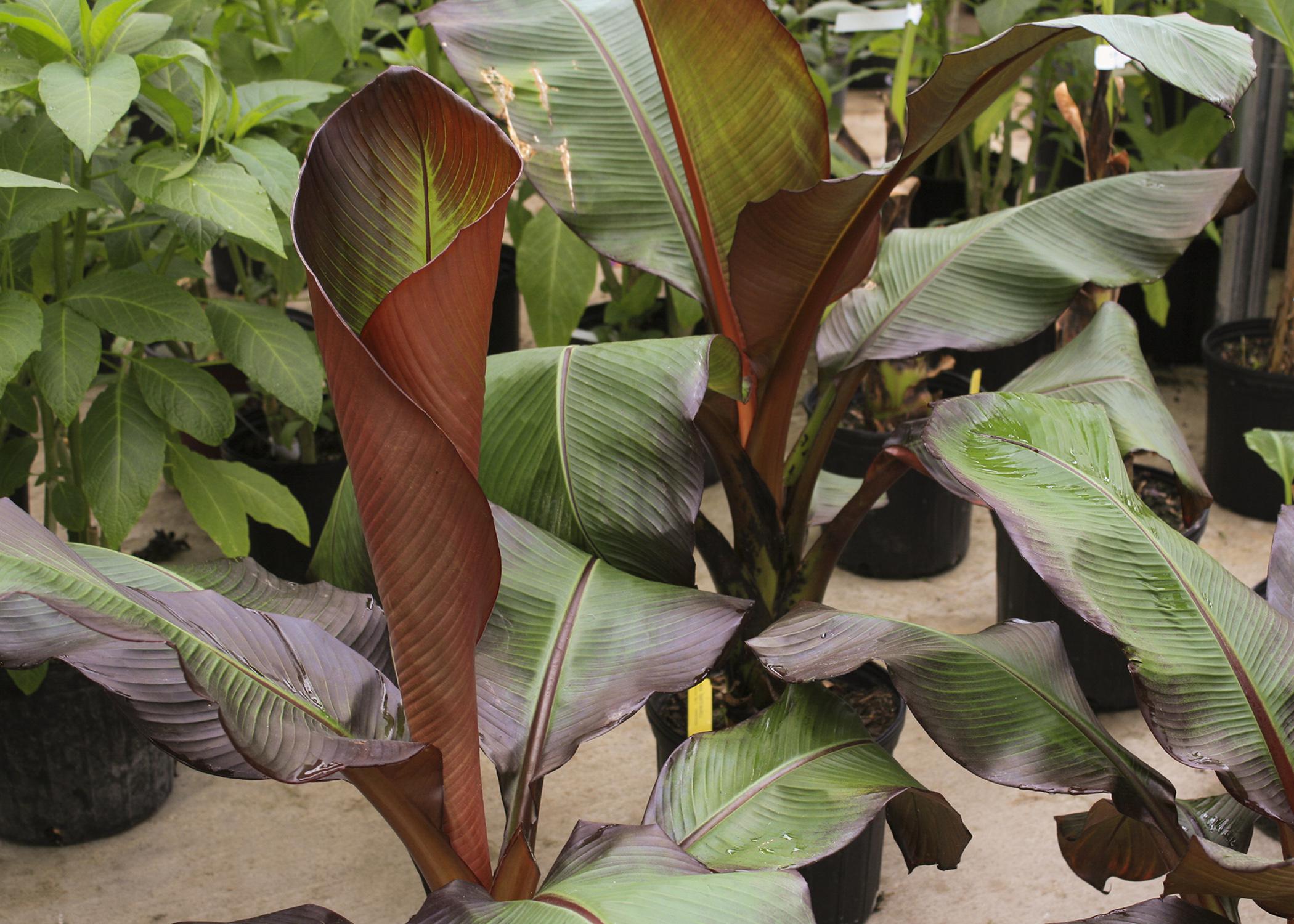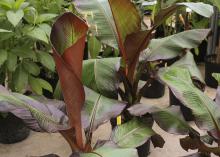Information Possibly Outdated
The information presented on this page was originally released on August 25, 2014. It may not be outdated, but please search our site for more current information. If you plan to quote or reference this information in a publication, please check with the Extension specialist or author before proceeding.
Versatile bananas bring tropics to Mississippi
A lot of people are interested in creating a tropical feeling around their homes, and growing bananas is an easy way to accomplish this goal.
If you think bananas can be grown only in coastal Mississippi, I want to try to change your mind. There are selections that are hardy for all landscapes in Mississippi.
Japanese Fiber is widely considered to be the most cold-tolerant banana selection. The coarse-textured, bright-green leaves can be 6 feet long and arch out from the top of thick trunks. In coastal counties, this plant can reach up to 10 feet tall. Other garden locations can expect a 5-foot-tall plant. Even at shorter heights, this banana has a strong landscape presence.
Thai Black banana is one of fastest growing landscape bananas. Its trunk has a deep, dark purple color. Midribs rising from the trunk carry this coloration and fade to dark-green foliage. This banana needs a large space in the landscape, as some specimens grow to more than 15 feet tall in landscapes all across Mississippi.
In my opinion, any plant with red in the foliage is a landscape winner. For that reason, I really like the various bananas with red leaves. One of the prettiest is Siam Ruby, a variety I have growing in my landscape. The stem’s rich, burgundy color is stunning, and the irregular variegation of bright green on burgundy foliage seems to shimmer.
Siam Ruby will probably reach a height of 4 to 5 feet in your landscape. It is more suited to zones 8 and 9, and it will die back to the ground each winter.
The leaves of Bordelon banana are adorned with maroon splotches. The backs are solid red, and these are very visible as new leaves begin to unfurl. Based on trial data, Bordelon may be the most cold tolerant of the red-striped banana varieties. This plant was first discovered near Bordelon, Louisiana, as a sport mutation of a Sumatrana banana plant.
Red Abyssinian is another of my personal favorites. The leaves are bright green with a red midrib. As new growth emerges, it is flushed with burgundy and almost appears to be hand painted in shades of red, burgundy and green.
Red Abyssinian is in the genus Ensete, which does not produce offsets or pups and dies after flowering. Despite this characteristic, it is an outstanding banana to grow in a large container on the porch or patio.
The extra-large leaves of all bananas look great, but they need protection from strong winds, which can quickly cause them to shred. But even this is a matter of preference; I think the shredding adds character and movement to the landscape.
Use commercial container mixes when growing bananas in containers, as these are lightweight and have good drainage. Choose a container carefully. Select one that is large enough to remain in proportion with the plant itself. Bananas need consistent moisture, and Mississippi weather is often dry. A heavy layer of mulch is critical in maintaining soil moisture for optimum growth.
Bananas are heavy feeders. Use a balanced, slow-release fertilizer, such as a 14-14-14, lightly scratched in the soil around each plant. For containers, use a water-soluble fertilizer on a weekly basis as part of your regular watering schedule.
Wherever you end up using bananas, I’m confident you will find their coarse-textured foliage is right at home in your garden.








